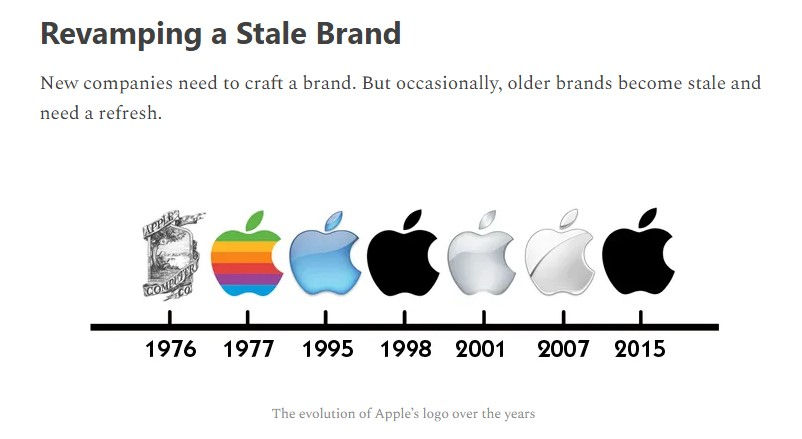Why do Companies Change their Logo? - [Old to Bold]
- Madhu Kumar C
- Jul 27, 2023
- 3 min read
Updated: Jul 19, 2025

Why do Companies Change their Logo?:
Companies change their logos for a variety of reasons. It's a decision that can have a significant impact on their brand image and how they are perceived by the public.
The most recent example of this is when the Twitter logo changed from a "bird" to an "X" done by Elon Musk.
Now, let's dive into some of the most common reasons why companies choose to update their logos.
Do you know? - “A logo can make or break a brand’s identity, so having an insider’s view on design can be helpful when you’re making your own logo” – Adobe Express
Why do Companies Change their Logo?:
One major reason is the need to modernize and stay relevant in a rapidly changing marketplace.
As new design trends emerge and consumer preferences evolve, companies often find themselves with outdated logos that no longer resonate with their target audience.
By refreshing their logo, they can show that they are in tune with current trends and are ready to adapt to the ever-changing business landscape.
Remember - "the key is to continuously learn, adapt, and evolve your strategies to align with your customers’ changing needs and expectations. After all, in the digital world, there’s always room for improvement and growth. Keep testing, keep optimizing, and watch your business flourish” – Level343
Most Iconic Logos of All Time:

Another reason for logo changes is a company's desire to reposition itself in the market.
As businesses grow and evolve, they may need to alter their brand identity to reflect new strategic directions or target different customer segments.
A logo change can be a powerful symbol of this transformation, signaling to stakeholders that the company is embarking on a new chapter.
“A logo facelift is a mere brand refresh—far less comprehensive and transformative” – MarketingProfs
Sometimes, a logo change is driven by legal considerations.
Companies may discover that their current logo is too similar to another company's trademark, leading to potential legal disputes and brand confusion.
In such cases, a logo redesign becomes necessary to avoid legal entanglements and protect the company's brand equity.
Rebranding efforts can also prompt logo changes.
When a company undergoes a comprehensive rebranding exercise, it often involves updating not just the logo but also other brand elements such as colors, typography, and messaging.
This holistic approach ensures consistency across all touchpoints and reinforces the new brand identity.
Customer feedback can also be a catalyst for logo changes.
Companies often conduct market research or gather customer insights to understand how their brand is perceived.
If customers find the current logo confusing or unappealing, a logo redesign might be done to enhance brand recognition and improve customer satisfaction.
“With an ever-growing marketplace and companies trying to cut through the noise, you want to make sure your brand experience is top-of-mind. Your users’ experience will lead them to brand recall and loyalty” – Growth Daily Newsletter
Lastly, mergers and acquisitions frequently lead to logo changes. [In the case of Twitter, it was an acquisition].
When two companies join forces, it's essential to create a new visual identity that represents the combined entity.
This process involves elements of both companies' existing logos while incorporating new elements that reflect the merged organization's values and goals.
Example of Apple Company's Logo Change Over Years:
In conclusion, companies change their logos for various reasons, including the need to modernize, reposition themselves in the market, comply with legal requirements, support rebranding efforts, respond to customer feedback, or align with mergers and acquisitions.
A well-executed logo change can help a company stay relevant, differentiate itself from competitors, and strengthen its brand identity in the eyes of consumers.
Here's related information that you may find helpful - Why do Companies Brand their Products?
FAQs:
Difference between Logo and Brand:
A logo is a visual symbol that identifies your business, while a brand is the complete personality and perception of your company.
Your logo is just one element of your brand, which encompasses your values, voice, customer experience, reputation, and emotional connection with your audience.
Simply put: a logo is what people see, a brand is what people feel.
Here's related information that you may also find helpful – What are Brand Mentions?
P.S: Ready to [unlock the power of digital marketing] and drive [your] business forward? – Access my forum today
P.S.S: Please don’t forget to forward this blog post to your network so they can get the best tips, practices, strategies, education, resources, and tools to help their businesses grow [sharing is caring].

Any comments that are unrelated, seem like spammy, contain irrelevant links, or appear insecure will be removed.